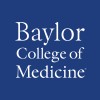
TD-1792 in Gram-positive Complicated Skin and Skin Structure Infection
Staphylococcal Skin InfectionThe purpose of this study is to determine whether TD-1792 is safe and effective when used to treat complicated skin and skin structure infections caused by Gram-positive bacteria.

Pilot, Opened, Randomized Clinical Trial to Assess the Efficacy of Duloxetine in the Treatment of...
FibromyalgiaHIV-1 InfectionThe purpose of this study is to compare duloxetine with conventional treatment of pain in HIV-1 infected patients.

KALETRA Or LEXIVA With Ritonavir Combined With EPIVIR And Abacavir In Naive Subjects Over 48 Weeks...
HIV InfectionInfection1 moreThis study will compare the ability of fosamprenavir 700 mg with ritonavir 100 mg twice a day or lopinavir 400 mg with ritonavir 100 mg twice a day both combined with a fixed dose combination tablet of abacavir 600 mg and lamivudine 300 mg once a day to suppress virus levels of HIV to less than 400 copies/mL of blood. In addition we will study the safety and tolerability of these compounds over the 48 week study period in patients naive to anti-HIV therapy.

Treating Severe Chronic Epstein-Barr Virus (EBV) Infection With EBV Specific Cytotoxic T Lymphocytes...
Epstein-Barr Virus InfectionsSevere chronic active Epstein-Barr virus (SCAEBV) is a rare Epstein-Barr virus (EBV or commonly known as mono or the kissing disease) associated disorder. This disorder may cause chronic tiredness and fevers and sometimes be complicated by life threatening problems such as multi-organ failure, chronic (ongoing) pneumonia, and lymphoproliferative diseases (diseases involving the lymph nodes which could eventually show up as leukemia or a tumor). The reasons for the body's inability to control the EBV infection are still unknown and no effective treatment is currently available. This research study uses Epstein-Barr virus (EBV) specific cytotoxic T lymphocytes (CTLs). We want to see if we can grow special white blood cells, called T cells, that have been trained to kill EBV infected cells in the laboratory and see if these cells may help control the EBV infection when given back to the patient. The purpose of this study is to find the largest safe dose of EBV specific CTLs, to learn what the side effects are, and to see whether this therapy might help the body fight off the SCAEBV infection.

Comparison of Fluconazole vs Voriconazole to Treat Fungal Infections for Blood and Marrow Transplants...
LymphomaInfection1 moreThe study is designed as a Phase III, randomized, double-blind, multicenter, prospective, comparative study of fluconazole versus voriconazole for the prevention of fungal infections in allogeneic transplant recipients. Recipients will be stratified by center and donor type (sibling vs. unrelated) and will be randomized to either the fluconazole or voriconazole arm in a 1:1 ratio.

Study Evaluating the Safety and Efficacy of a Once-daily Dose of Tigecycline vs Ertapenem in Diabetic...
Bacterial InfectionsDiabetic Foot1 moreThe purpose of this study was to look at the safety and effectiveness of a once-daily dose of tigecycline compared to ertapenem for the treatment of diabetic foot infections. The co-primary efficacy endpoints were not met.

Is Helicobacter Pylori Infection a Cause or Treatment Failure of Iron Deficiency Anemia in Children...
Helicobacter Pylori InfectionIron Deficiency Anemia3 moreHelicobacter pylori is recognized as a major gastrointestinal pathogen in developing countries. This microorganism infects up to 60% of children less than five years in those countries and is strongly associated with chronic gastritis and peptic ulcer disease in children and adults. The progression of gastritis to atrophy often leads to decreased gastric acid output, which is a well-known risk factor for anemia. Gastric acid is essential for increasing the bioavailability and absorption of non-heme dietary iron, the most important source of iron in developing countries. Numerous reports suggest that iron malabsorption secondary to low gastric acid output is a problem in developing world countries. It has been further observed that iron deficiency anemia is resistant to iron therapy particularly in these countries. In a recently completed study we observed an association of anaemia with H. pylori infection. We hypothesize that the poor bioavailability of iron in these countries could be related to H. pylori -induced low gastric acid output and we propose to investigate the role of H. pylori infection as a cause of anemia and treatment failure of iron supplementation in Bangladesh. A prospective, randomized, double-blind, placebo-controlled field trial is proposed among four groups ( 65 each) of H. Pylori infected children of 2-5 years of age with iron deficiency anemia. The children will be assigned to one of the four therapies: antibiotics alone (for H. Pylori eradication), antibiotic plus iron therapy, iron therapy alone, or placebo. Hemoglobin concentration, serum ferritin concentration, and transferrin receptor will be measured before and at 1 and 3 month after the intervention. We also propose a complementary study in an additional 20 children with H. Pylori infection and iron deficiency anemia to assess iron absorption with application of double stable isotopes. The change in hematological parameters will also be compared among the groups before and after the therapy. The results of this study are expected to have implications in the prevention and treatment of iron deficiency anemia in developing countries.

Pegylated Interferon Therapy for Acute Hepatitis C Infection in HIV-infected Patients
Hepatitis CHIV InfectionsThe purpose of this study is to determine whether pegylated interferon therapy is effective to treat acute hepatitis C infection in HIV-coinfected individuals.

New Tablet Containing Two FDA Approved Anti-HIV Drugs For Antiretroviral Therapy Experienced HIV-1...
InfectionHuman Immunodeficiency Virus I1 moreA 48-week study to investigate the safety and effectiveness of a new compact formulation of two already FDA-approved anti-HIV drugs in subjects who have already been receiving treatment for their HIV infection.

A Study of Itraconazole in the Prevention of Histoplasmosis, a Fungal Infection, in HIV-Infected...
HIV InfectionsHistoplasmosisTo assess the safety and efficacy of itraconazole versus placebo for prevention of histoplasmosis in HIV-infected patients with CD4 counts < 150 cells/mm3 who reside where histoplasmosis is endemic. To assess the safety and efficacy of itraconazole for preventing other debilitating fungal infections, such as cryptococcosis, aspergillosis, recalcitrant oropharyngeal or vaginal candidiasis, and recurrent esophageal candidiasis.
